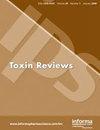不同操作参数对水介质中环丙沙星光催化降解的影响
IF 2.4
4区 医学
Q2 TOXICOLOGY
引用次数: 38
摘要
摘要环丙沙星(Ciprofloxacin, CIP)是一种常用的抗生素,在地表水、废水和污水处理厂中均有检出。由于其卤化杂环结构和在大ph范围内的高化学稳定性,它是一种持久性有机污染物。污水处理厂中CIP的存在表明通过常规方法无法去除抗生素。近年来,许多研究人员报道了通过光催化降解技术成功地消除了污染水中的CIP。光催化剂的降解效果与光催化剂的选择和实验条件直接相关。本文综述了国内外关于光催化降解CIP的文献,以及各种操作参数(光催化剂类型、改性及用量、初始底物浓度、反应介质pH、离子组分等)对水介质中CIP光催化降解的影响。结果表明,在酸性pH值下,不同催化剂的降解效果较好,催化剂改性后的降解效率可达100%。本文章由计算机程序翻译,如有差异,请以英文原文为准。
Influence of various operational parameters on the photocatalytic degradation of ciprofloxacin in aqueous media: a short review
Abstract Ciprofloxacin (CIP) is a frequently prescribed antibiotic for various medicinal purposes that have been detected in surface water, wastewater, and wastewater treatment plants. It is a persistent organic pollutant due to its halogenated heterocyclic structure and high chemical stability at a wide range of pH. The presence of CIP in wastewater treatment plants is an indication that the antibiotic could not be removed via conventional methods. Recently, various researchers have reported the successful elimination of CIP from polluted water via photocatalytic degradation. The degradation efficacy of a photocatalyst is in direct relation to the choice of the photocatalyst and the experimental conditions employed. This review elaborates on the available literature on the photocatalytic degradation of CIP and the role of various operational parameters including photocatalyst type, modification and dosage, initial substrate concentration, pH of the reaction medium, and ionic components on the photocatalytic degradation of CIP in aqueous media. The obtained results revealed that better degradation results are recorded using various catalysts at acidic pH values, and up to 100% degradation efficiency can be achieved with catalyst modification.
求助全文
通过发布文献求助,成功后即可免费获取论文全文。
去求助
来源期刊

Toxin Reviews
医学-毒理学
CiteScore
6.80
自引率
0.00%
发文量
36
审稿时长
>12 weeks
期刊介绍:
Toxin Reviews provides an international forum for publishing state-of-the-art reviews and guest-edited single topic special issues covering the multidisciplinary research in the area of toxins derived from animals, plants and microorganisms. Our aim is to publish reviews that are of broad interest and importance to the toxinology as well as other life science communities. Toxin Reviews aims to encourage scientists to highlight the contribution of toxins as research tools in deciphering molecular and cellular mechanisms, and as prototypes of therapeutic agents. Reviews should emphasize the role of toxins in enhancing our fundamental understanding of life sciences, protein chemistry, structural biology, pharmacology, clinical toxinology and evolution. Prominence will be given to reviews that propose new ideas or approaches and further the knowledge of toxinology.
 求助内容:
求助内容: 应助结果提醒方式:
应助结果提醒方式:


